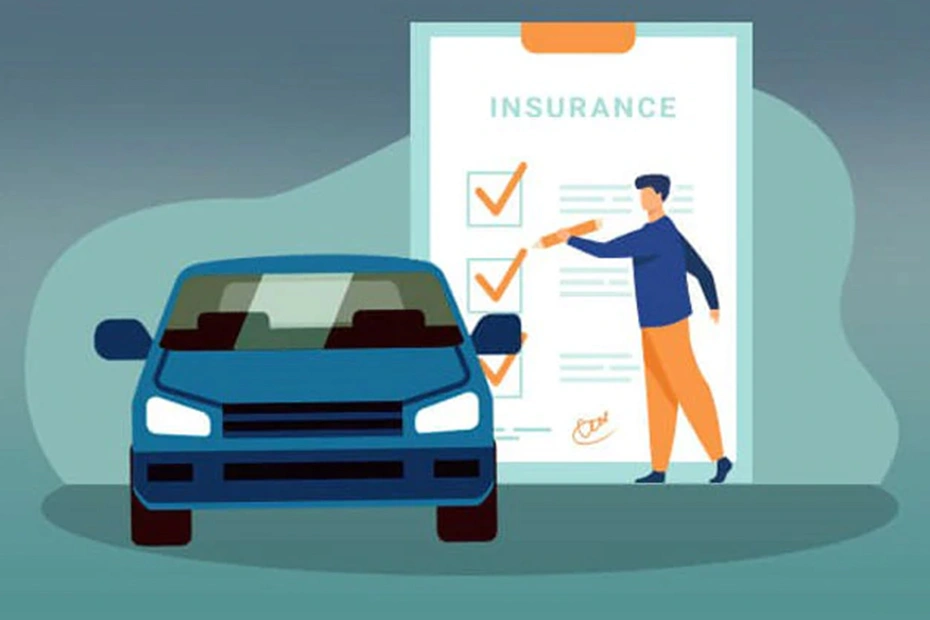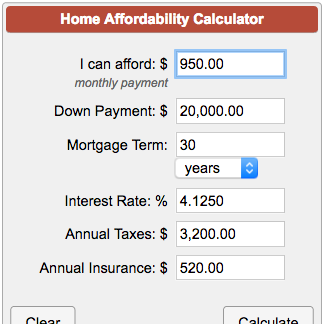Step-by-Step Guide: Using a Car Insurance Calculator to Get Accurate Quotes Fast
Car insurance is an essential part of owning and driving a vehicle. It provides financial protection in case of accidents, theft, or other unforeseen events. However, finding the right car insurance policy can be overwhelming due to the variety of options available. A car insurance calculator can simplify this process by helping you get accurate quotes quickly. In this guide, we will walk you through the steps to use a car insurance calculator effectively.
What Is a Car Insurance Calculator?
A car insurance calculator is an online tool designed to estimate your car insurance premiums based on specific details about you and your vehicle. These calculators take into account factors such as:
- Your age
- Driving history
- Vehicle make and model
- Coverage preferences
- Location
By entering accurate information into the calculator, you can get an estimate of how much you’ll pay for car insurance before committing to a policy.
Why Use a Car Insurance Calculator?
Using a car insurance calculator has several benefits:
- Saves Time: Instead of contacting multiple insurers individually, you can get estimates from various providers in one place.
- Cost Comparison: It allows you to compare rates from different companies to find the most affordable option.
- Customizable Options: You can adjust coverage levels and deductibles to see how they affect your premium.
- Informed Decisions: By understanding potential costs upfront, you can choose coverage that fits your budget and needs.
Step 1: Gather Necessary Information
Before using a car insurance calculator, gather all the required details about yourself and your vehicle. This ensures that the quotes generated are as accurate as possible. Here’s what you’ll need:
Personal Information:
- Your name
- Age
- Address (ZIP code)
- Marital status
Driving History:
- Number of years you’ve been driving
- Any past accidents or traffic violations
- Current auto insurance provider (if applicable)
Vehicle Details:
- Make, model, and year of your car
- Vehicle Identification Number (VIN)
- Mileage on the odometer
Coverage Preferences:
Decide on the type of coverage you want:
- Liability-only coverage (minimum required by law)
- Full coverage (includes liability, collision, and comprehensive)
- Additional options like uninsured motorist protection or roadside assistance

Step 2: Choose a Reliable Car Insurance Calculator
Not all calculators are created equal. Some may provide more accurate results than others depending on their data sources and algorithms. Here’s how to choose one:
- Look for calculators offered by reputable websites or insurers.
- Check reviews or user feedback for reliability.
- Ensure it covers your location since rates vary by state or ZIP code.
Some popular options include:
- NerdWallet’s Car Insurance Calculator
- Progressive’s Online Quote Tool
- Geico’s Rate Estimator
Step 3: Input Your Information Accurately
Once you’ve chosen a calculator, start entering your details step by step:
Enter Personal Details:
Provide basic information like your age, gender, marital status, and ZIP code. These factors influence rates because insurers assess risk differently based on demographics.
Add Driving History:
Be honest about any tickets or accidents in your record. Misrepresenting this information could lead to inaccurate quotes or issues when purchasing a policy later.
Provide Vehicle Information:
Input details about your car accurately—its make, model year, VIN number (if available), and current mileage.
Select Coverage Levels:
Choose the type of coverage you want along with deductible amounts for collision/comprehensive policies if applicable.
Step 4: Adjust Coverage Options
One advantage of using a car insurance calculator is that it lets you experiment with different coverage levels to see how they impact premiums.
Key Coverage Types To Consider:
- Liability Coverage: Covers damages/injuries caused by you in an accident.
- Collision Coverage: Pays for repairs/replacement if your vehicle is damaged in an accident.
- Comprehensive Coverage: Protects against non-collision incidents like theft or natural disasters.
- Uninsured/Underinsured Motorist Protection: Covers expenses if you’re hit by someone without adequate insurance.
Adjusting these options helps balance affordability with adequate protection.
Step 5: Review Estimated Quotes
After entering all necessary information into the calculator:
- Review estimated monthly/yearly premiums displayed for each insurer.
- Compare rates side-by-side while considering additional factors like customer service ratings or discounts offered.
- Take note of any significant differences between providers—this could indicate variations in coverage quality rather than just price alone.
Step 6: Explore Discounts
Many insurers offer discounts that can lower premiums significantly when applied correctly:
Common Discounts Include:
- Safe driver discount (no recent violations/accidents)
- Multi-policy discount (bundling auto/homeowners’ policies)
- Good student discount (for young drivers maintaining high grades)
Check which discounts apply during quote generation—it might save hundreds annually!
Step 7: Contact Insurers Directly For Final Quotes
While calculators provide useful estimates based on general criteria—they aren’t always exact due variations among individual companies’ underwriting processes/policies etc..
To finalize pricing/details contact selected insurers directly after narrowing down top choices via calculated results..
Ask questions clarify doubts regarding exclusions limitations hidden fees etc..
Step 8: Verify the Coverage Details
Once you’ve contacted the insurers directly and received final quotes, it’s essential to verify the coverage details thoroughly. The car insurance calculator provides an estimate, but the actual policy terms may differ slightly. Here’s what you need to do:
- Review Policy Terms: Carefully read through the policy documents provided by each insurer. Pay attention to what is included and excluded in the coverage.
- Understand Deductibles: Confirm the deductible amounts for collision and comprehensive coverage. Higher deductibles usually mean lower premiums but higher out-of-pocket costs during a claim.
- Check Liability Limits: Ensure that liability limits meet your state’s minimum requirements or exceed them if you want additional protection.
- Evaluate Add-ons: If you opted for add-ons like roadside assistance or rental car reimbursement, confirm their availability and cost.
This step ensures that there are no surprises later when you file a claim or need assistance.
Step 9: Compare Customer Service Ratings
While price is an important factor, customer service quality should not be overlooked. A cheaper policy might not be worth it if the insurer has poor customer support or slow claims processing. To evaluate customer service:
- Read Online Reviews: Check reviews on trusted platforms like Trustpilot or Better Business Bureau (BBB).
- Ask Friends/Family: Personal recommendations can provide valuable insights into an insurer’s reliability.
- Check Claim Settlement Ratio: Look for information about how quickly and efficiently the company settles claims.
Good customer service ensures peace of mind when dealing with accidents or emergencies.
Step 10: Finalize Your Choice
After comparing quotes, coverage options, and customer service ratings, it’s time to make your decision. Follow these steps to finalize your choice:
- Select the Best Policy:
- Choose a policy that offers adequate coverage at a reasonable price.
- Ensure that it aligns with your budget and driving needs.
- Confirm Discounts:
- Double-check all applicable discounts before purchasing.
- Ask if there are any additional savings opportunities you might have missed.
- Purchase the Policy:
- Complete the purchase process online or through an agent.
- Save a copy of your insurance card and policy documents for future reference.
- Set Up Automatic Payments (Optional):
- Many insurers offer discounts for setting up automatic payments.
- This also ensures you never miss a payment deadline.
Tips for Using Car Insurance Calculators Effectively
To get the most accurate results from a car insurance calculator, keep these tips in mind:
- Provide Accurate Information: Entering incorrect details can lead to inaccurate quotes or issues during policy issuance.
- Experiment with Coverage Levels: Adjust deductibles and coverage types to see how they impact premiums.
- Use Multiple Calculators: Compare results from different calculators to ensure consistency across estimates.
- Update Information Regularly: If your circumstances change (e.g., buying a new car), use the calculator again to get updated quotes.
Common Mistakes to Avoid When Using Car Insurance Calculators
Avoid these common pitfalls when using car insurance calculators:
- Ignoring Hidden Fees: Some policies may have hidden fees not reflected in initial quotes—ask insurers about these upfront.
- Overlooking State Requirements: Each state has specific minimum liability requirements—ensure your chosen policy complies with them.
- Focusing Only on Price: Cheapest isn’t always best—consider factors like coverage quality and customer service too.
- Skipping Discounts Section: Failing to explore available discounts could mean missing out on significant savings opportunities.
- Rushing Through Input Fields: Take time entering details accurately—small errors can lead to big discrepancies in estimated premiums versus actual costs later on!
Benefits of Using a Car Insurance Calculator
Using a car insurance calculator offers several advantages:
- Saves Time: Quickly compare multiple insurers without contacting each individually.
- Cost Transparency: Understand potential costs upfront before committing financially.
- Customization Options: Tailor policies according to personal preferences/budget constraints easily!
- Informed Decision-Making Process Ensured!: Make well-informed choices based upon reliable data-driven insights provided via calculated results generated instantly within seconds!.






